In the early morning hours of November 20th, 1969, an estimated 89 Native Americans boarded boats near Sausalito, California and headed towards the Island of Alcatraz. When landing on “The Rock” they immediately declared the island “by right of discovery” with plans on turning it into a Native American cultural center and school. This would begin a 19 month occupation that would catch the attention of the entire nation.
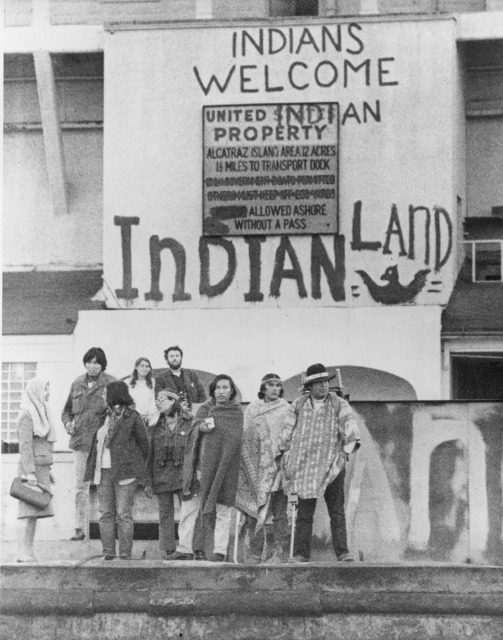
Photo: gracelandtower
The Alcatraz prison closed its doors on March 21, 1963, due to large operating costs. Over the next few years, it eventually became classified as surplus federal property, which technically would mean that Native Americans were allowed by law to appropriate it according to a treaty signed in 1868. After declaring they had now owned the land, they wanted the American government to provide funding to create an Native American cultural center. The government refused, and thus began the standoff between the two parties.

Photo: learner
After a fire in October of 1969 burned down San Francisco’s American Indian Center, the IOAT soon set their sights on the island of Alcatraz since it was unused at the time. A man named Richard Oakes, who was a student at the Mohawk College, organized a smaller protest on November 9th, 1969, that lasted only a day before authorities ushered them off the island. Oakes told the San Francisco Chronicle, “If a one day occupation by white men on Indian land years ago established squatter’s rights, then the one day occupation of Alcatraz should establish Indian rights to the island.”
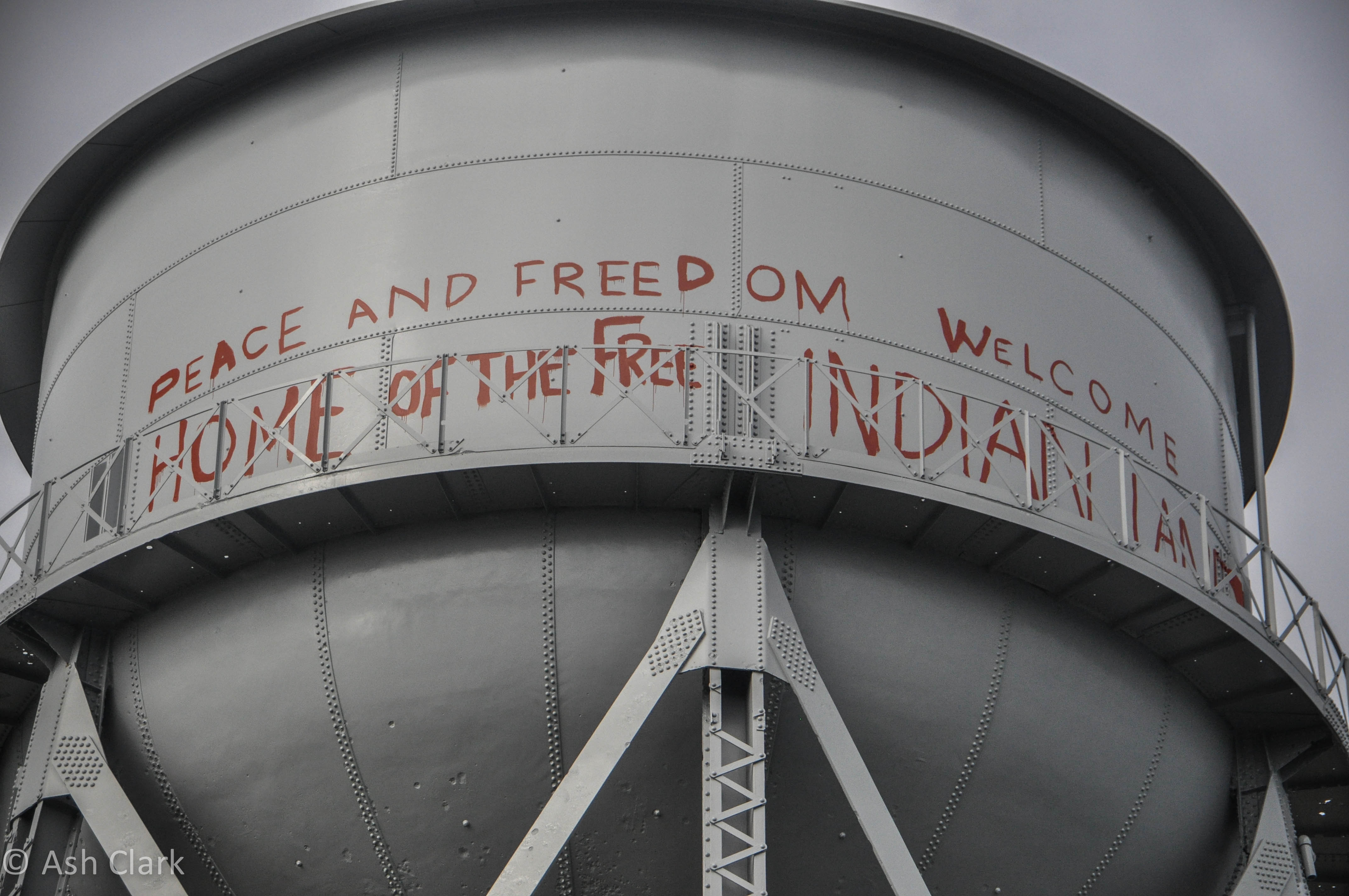
Photo: inverse
When the much larger protest started just a few weeks later, the group didn’t waste any time. The initial group was said to be around 89 people. They went right into the guard’s quarters and made themselves at home. A message soon appeared on the water tower that read: “Peace and Freedom. Welcome. Home of the Free Indian Land.” Other slogans like “Custer had it coming” and “Red Power” could also be seen.
Although they had already claimed they now owned the island “by right of discovery,” they apparently made a sarcastic offer to the government to purchase the island. What they offered as payment was “$24 in glass beads and red cloth,” which is supposedly is what the Indians received for the sale of Manhattan.
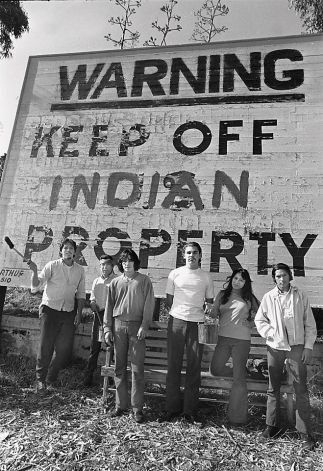
Photo: pinterest
The group also claimed that it didn’t matter to them that the Alcatraz island lacked fresh water and was extremely underdeveloped. The reason they gave was they were already used to living in those conditions at Indian reservations provided by the government.
President Nixon felt it would end badly if he tried to forcibly remove the protesters so he decided to leave them be, as long as they remained peaceful. I’m sure he thought they would eventually give up once their resources and supplies were gone. I’m sure he didn’t expect the protesters to receive so much help from the public.
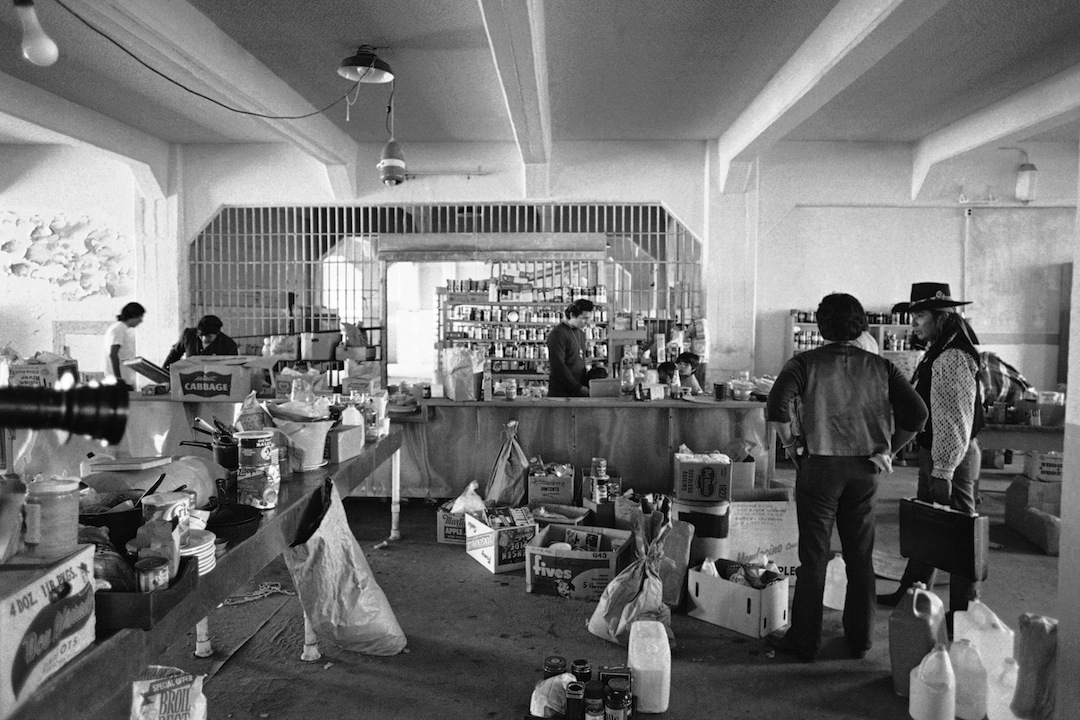
Photo: source
It was reported that at times there were as many as 600 people on the island as people would come and go almost at will. People donated food, water, clothes and even money, apparently thousands of dollars just poured in to help aid the protesters. There was even said to be visits from Hollywood Royalty such as Merv Griffin and Jane Fonda that came out to show their support. The band Creedence Clearwater Revival apparently donated a boat which was later christened as “Clearwater”, very fitting I know.
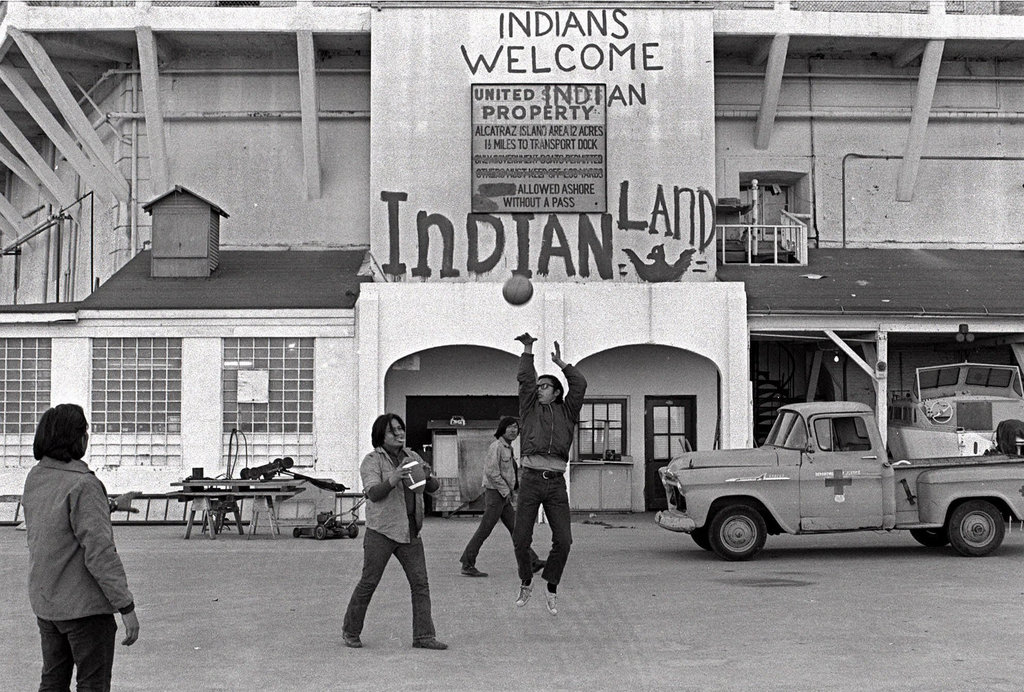
Photo: nytimes
It wasn’t all happy times though, by early 1970 things had taken a turn for the worse living on the island. Most of the protesters consisted of college students, which meant that at some point they needed to return to class. In order to maintain a certain amount of people on the island they soon brought on vagrants to replace the students. But they didn’t have any real interest in the cause, they more cared about living rent free. According to reports the biggest problem was the hippies and freelance photographers. They were said to be bringing drugs and alcohol to the island, which was banned by the originating group.
In January of 1970 a tragic accident happened where the young stepdaughter of Richard Oakes, who was still one of the main leaders at that time. She had apparently fallen in one of the many stairwells which resulted in her passing away. This was devastating to Oakes and his wife, so they actually left the island leaving the rest to fend for themselves.
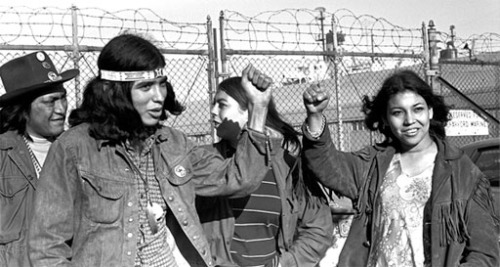
Photo: tumblr
A few short months later it was determined by President Nixon and his advisers that a diplomatic solution was going to be virtually impossible. So in an effort to peacefully force the group to vacate the island, the government shut off all remaining power going there. Although it would still take some time, this was ultimately the beginning of the end.
The last few months of the occupation had turned from an Indian protest fighting for the right of their people to an unorganized bunch of squatters to stubborn to admit defeat. By the time June of 1971 came around the government had enough. They sent in armed Federal Marshals to remove anyone left on the island. But by that time there were only a small handful of people still remaining, including four children. I can’t imagine that would be a place that you would want to have children around. It would be interesting to talk to one of those kids today about what they remember from that crazy time period.

